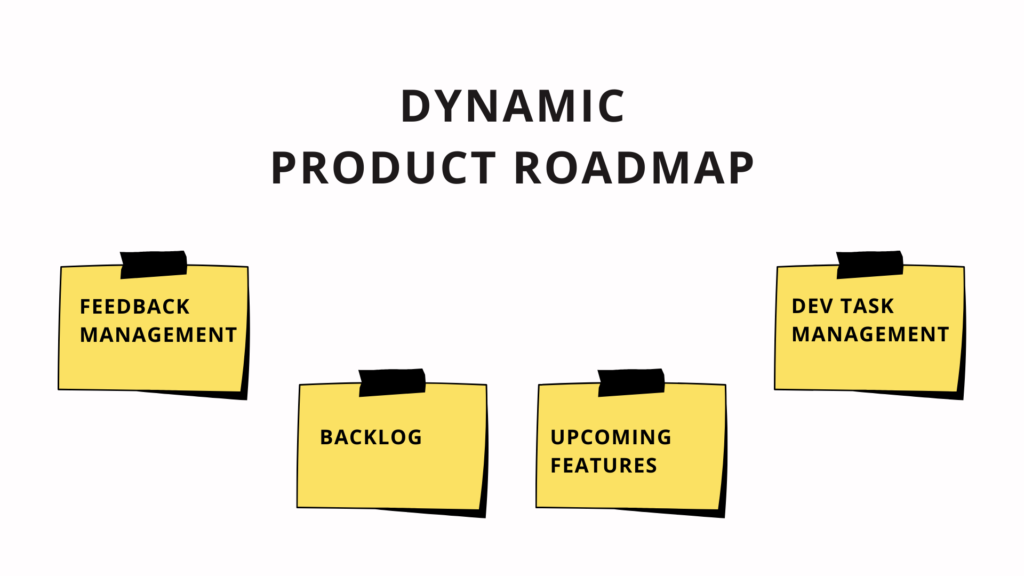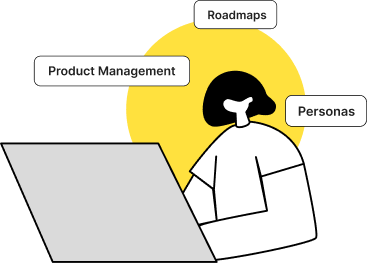Understanding why roadmaps fail, how they cause alignment issues for small and big teams alike
Thanos’ ultimate purpose was to wipe away half of the universe’s inhabitants. For his plan to work, he needed the six infinity stones spread around the cosmos. In all of his actions, he prepared meticulously, had a specific goal in mind, and communicated effectively. Despite the fact that his purpose was one of annihilation and the end of all humanity, he was able to complete his objective and leave the Avengers and half of the galaxy in the dust.
How did Thanos do all this? Well, it seems like he had a great roadmap.
Much like Thanos, every successful business and organization has a road map, which also happens to be one of the most important tools a product manager can have. It makes them think hard, tells them where they’re going, and makes sure everyone is on the same page.
A lot of work goes into making a product plan. Product roadmaps don’t work as well as people think because they’re hard to design. So, we went on a journey to figure out why roadmaps don’t work sometimes and here we shed light on some such reasons. (Ultimately, we want you to build great products!)
Identifying the hurdles
The Black Order may not come to your rescue, but you have us, and we are here to help you avoid the potholes during the road mapping exercise.
Let’s begin –
ROADMAP TREATED LIKE A GROCERY LIST
Has anyone ever asked you to prioritize from a grocery list of features? If you answered with a resounding “yes,” we suggest you immediately close your eyes and firmly seal your ears with your hands. The roadmap can easily be interpreted as a wishlist of features that the customers, leadership, and investors want to see in the roadmap but, it needs to be directed.
“A product roadmap is an important tool. It is a blueprint that explains the vision and strategy for the development of the product.
Approaching the Roadmap like a wishlist may create chaos in prioritizing the features –
| – Teams will lose interest while referring to a long list of features. – It will drive the developers away. Engineering teams need to figure out what is most important on the roadmap, why, and how the product/features will benefit the users. – It will fail to communicate what unique value the product can deliver and win the customers’ trust. |
STATIC VS. DYNAMIC ROADMAPS

With markets, competitors, and customer expectations changing fast, it’s not a good idea to make a product plan in a document that is updated only once in a while.
“The roadmap must be a living thing. It is a strategic tool that shows how you think at the time it is made. Priorities, resources, finances, outside influences from competitors, and big customers can make you rethink how you do business.
| Sources of Backlog | Market & Findings | Tech to build |
| – Customer feedback/ tickets – Socials (LinkedIn/Twitter) – Reviews from Appstore, G2 Crowd – Prospect requests – Churn reasons | – Market research – Competitor research – Change in trends (web2-> web3) – User research – Change in the target market? | – The product can be offered as self-serve? – Build or buy modules to integrate into your product? – Offer as a developer ecosystem? |
The list is endless. But if you constantly think of areas to focus on, you need to update the direction your product and teams should take and adjust the roadmap accordingly.
FINE LINE BETWEEN RIGHT PROBLEMS AND WRONG PROBLEMS
Okay, your roadmap looks good and focuses on high-level strategic goals. But if you deliver features that don’t help your end-users, it may not work out well.
“In most cases, teams don’t do enough research into the industry, target personas, or talk to users to find out what they need. New technology will speed up development, but you need to focus on the issues that are important to your end-users.
| Understand your target personas | – No power users – Leadership/Managers – Admin users |
| Jobs to be accomplished (not demographics) | – List of jobs-to-be-done (read more about JTBD framework) – Which jobs can you offer as part of your product |
| Find problems that matter | – Which tasks do the users spend a lot of time on? – How can your product make their life easier? (you will never transfer money from the bank will you?) |
| How can you deliver value? | – What products are used by your users? – How do you think you can deliver something which is cheaper, faster and better? |
USING GUTS VS. DATA
In fiction, making decisions based on your instincts may seem superhuman. But in the real world, this may have negative consequences. In absence of data, the quickest way is to rely on experience and product sense.
But, before adding a new item to your roadmap, you must understand
- why you’re considering the new feature request,
- how much investment will it take,
- the expected impact on the customer’s day-to-day tasks
Starting to gather information in this regard will help assess the importance of the features. There are different factors to consider while making these decisions:
| If you don’t have a lot of details | Existing version needs to be improved? | What are your customers saying? |
| – Find the user personas who will receive maximum value – Determine what will make them efficient | – Find the factors that determine the success of your product – speed? Experience? Security? – What’s the benchmark and how will improve | – Willing to refer? – Not satisfied with your Support or Documentation? – Not aware of the features you have released? |
The Recipe for Brilliance
Now that we’ve identified the hurdles, it’s time to clear the road and see if we can create a roadmap that can promise value and align with your customer needs –
| – Begin with the product objectives and customer priorities – Involve the stakeholder’s teams in the road mapping process – Different Roadmaps will help communicate effectively – Business, Tech, Marketing Roadmaps. (While the end goals are the same, each team views the details differently) – Make Roadmaps dynamic and flexible – Be comfortable updating the Roadmap regularly |
The right product roadmap will cut down on uncertainty for your team and help you stay on track with your long-term goals.
Unlike Thanos, who had six infinity stones and the Black Order to accomplish his ambitions, you have this essay and every information about the potholes throughout the mapping process and measures to prevent them. Now that we have this, it’s time to create something that will be remembered for years to come.
SHAMELESS PLUG: The tool you choose must be flexible and allow you to explain your strategic rationale clearly. Freshflows allows you to do exactly that.
- Gather product backlog and customer feedback from Sales, Support teams
- Maintain internal research and market findings, existing product backlog, and tech debt
- Prioritize feature requests and plan your upcoming launch
- Share the roadmap with your stakeholder teams and customers
Build that amazing product your customers love!

